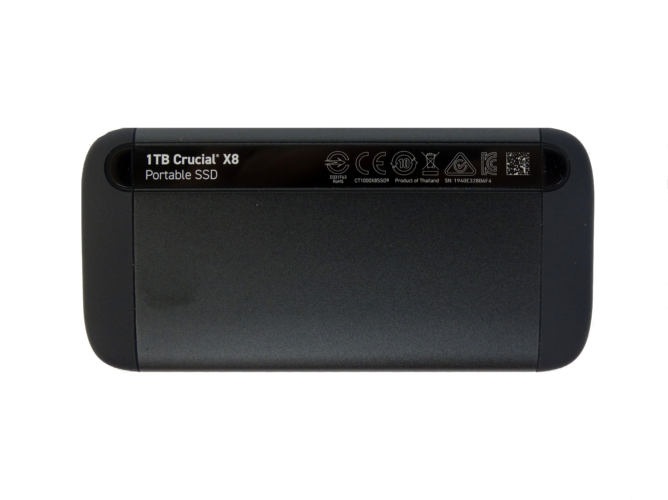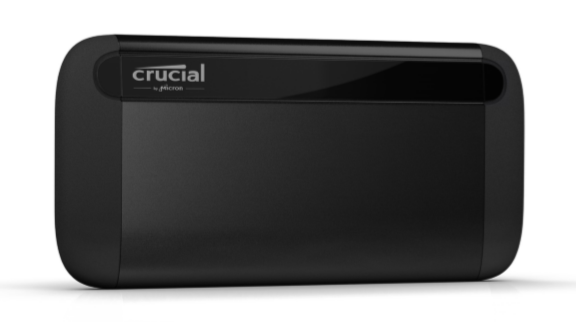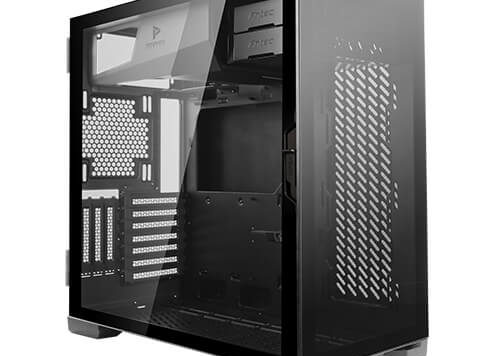Testing Notes
All of the products tested today were ran on an Asrock Z270 Taichi motherboard with an Intel Core i7-7700K processor. We used the same USB 3.1 Gen 2 port for consistency with all USB drives in the charts today.
Block Size Reads

Our testing starts with a custom script that measures read performance at different block sizes at queue depth 1. This is very similar to the ATTO Benchmark (that defaults to queue depth 4).
From 4KB to 64KB block sizes, the Crucial X8 performs about the same as several other drives in the charts today. The only other NVMe-based drive in the chart is the TEKQ Rapide with a high-performance Phison E7 controller paired with planar MLC flash. The Rapide runs on the Thunderbolt 3 bus and currently sells for $276.99 for the 960GB capacity.
The X8 does deliver strong read performance from 128KB to 8MB block sizes. We didn’t reach the claimed 1,050 MB/s performance in this test but managed to get very close to it.
Block Size Writes

In the write test we again see the Rapide with 2-bit per cell flash outperforming the rest of the field. We only added the drive to see the next performance tier on the price scale. Many users do not have a Thunderbolt 3 port on every device so you should consider the Rapide as a niche product and not in the same category as the X8.
The 1TB X8 Portable SSD compares well in small block size writes with the other USB models. The X8 starts to step away from the others at 64KB blocks and continues to gap the field as the block size grows.
Sequential Reads

With a single 128KB block read from each of the drives, the X8 shows only a marginal increase over the USB drives. Like every NVMe drive, the type of data you transfer is important and impacts performance. Larger files will transfer faster.
Sequential Writes

Writing 128KB blocks is actually faster than reading them on the 1TB X8. In this test, the drive writes data at nearly 600 MB/s for the first 20% or 200 gigabyte. Crucial used a larger SLC buffer on the X8 than we found on the P1 desktop/notebook SSD.
When briefed over the new portable SSD series, we initially had some concerns about the use of 4-bit per cell (QLC) flash. After testing the X8 and really getting a feel for the massive SLC buffer, we don’t think users will get outside of the high-speed lane. This is the equivalent of 4 Blu-Ray ISOs, 285 CD ISOs, or two modern massive games. To put it in perspective, many notebooks ship with 256GB SSDs so you could transfer nearly all of your full notebook drive to the X8 before dropping to the native QLC speed (around 80 MB/s).
Real World Data Transfers
We mentioned previously that the type of data will impact performance. The three data transfer charts show where the Crucial X8 Portable SSD is strong, and where it falls flat.
Of the USB drives, the X8 is the clear performance winner transfering a single Blu-Ray. This is a large block size file and for this product, the best case scenario.
In the second chart we show a game directory transfer using the rFactor 2 folder. The folder contains a mix of mostly small files, but includes a few larger files. This is the worse case scenario for the X8 since the number of small block size files outweighs the larger files.
The third test is a mix of small and large files modeled after my My Document folder several years ago. The mix consists of Word documents, music, a few short video clips and other random bits of data. The X8 Portable SSD falls right in the middle of the other USB drives in the charts. Sadly, the LaCie Rugged RAID with two 2.5″ 5,400 RPM hard disk drives only took five second longer to transfer the 15TB data.
Final Thoughts
4-bit per cell flash shouldn’t scare anyone in portable storage devices at this point. If the X8 Portable SSD came to market a year ago with the P1 and Intel 660p we would have been reluctant to recommend the technology.
With a year on the market, we have more faith in QLC. This is an industry wide notion, we’re not the only testers. Truth be told, even the engineers inside the fab companies were surprised with the technology’s true capabilities. The performance is higher than first expected and so in the endurance and data retention. In part, this is due to what companies learned from 3-bit per cell memory, and massive gains in error correction technology.
The Crucial X8 Portable SSD is just the first product using QLC memory. A number of companies will follow suit in the coming months and we expect to see several announcements in January at CES. This will again spark a battle over pricing and those skirmishes are always great for shoppers.
Current X8 pricing is already competitive in the two announced capacities but the low pricing also opens the door for a 2TB option missing from the product line at this time. We suspect Crucial will deliver a 2TB X8 Portable SSD in the near future. I feel like gamers will want to wait for the highest capacity possible for next generation consoles coming in 2020, but office and productivity users will find 1TB sufficient today.
Pros Cons Chart





